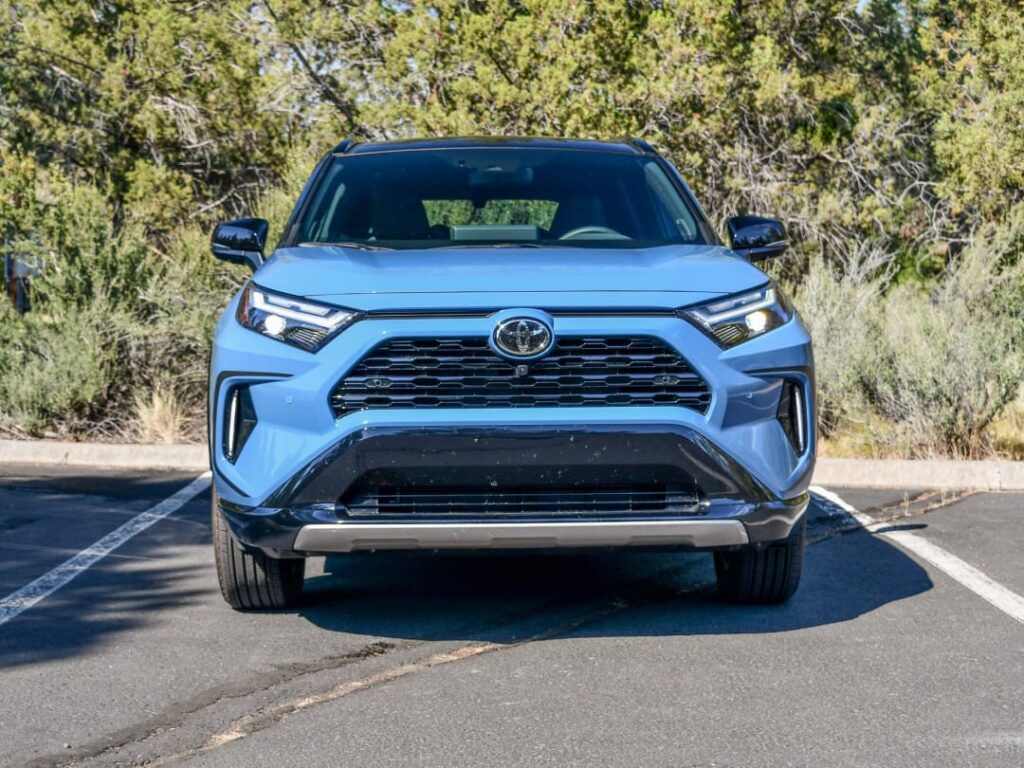These two compact-SUV heavyweights remain perennial favorites, but subtle distinctions set them apart. Here’s what to consider when choosing between the 2025 Toyota RAV4 and the 2025 Honda CR‑V.
1. Powertrains & Performance
- RAV4: Standard 2.5‑liter naturally aspirated four‑cylinder with an eight‑speed automatic, yielding 203 hp and 184 lb‑ft. Hybrid variants pair the same engine with electric motors for up to 219 combined hp.
- CR‑V: Base 1.5‑liter turbocharged engine makes 190 hp and 179 lb‑ft via a CVT. The two‑motor hybrid boosts output to 204 hp and delivers noticeably smoother, quieter power delivery.
Real‑World Takeaway: The CR‑V’s turbo and hybrid powertrains feel more refined and silent at low speeds, while the RAV4’s naturally aspirated engine offers a peppy, linear response that some drivers prefer.
2. Fuel Economy
- Gasoline Models (EPA Combined): Both hover around 30 mpg combined. The RAV4 leads on the highway with 35 mpg vs. the CR‑V’s 34 mpg, while the CR‑V nips ahead in the city (28 mpg vs. 27 mpg).
- Hybrids: RAV4 Hybrid: 41 mpg city / 38 mpg highway. CR‑V Hybrid: 40 mpg city / 34 mpg highway.
Real‑World Takeaway: All are efficient, but the RAV4 Hybrid claims the edge for drivers who spend significant time on the highway.
3. Interior & Cargo Space
- CR‑V: Approximately 99 cu ft of passenger volume and 76.5 cu ft of cargo space with the rear seats folded. Rear legroom measures 41.0 inches.
- RAV4: Roughly 98 cu ft of passenger volume and 69.8 cu ft behind the rear seats. Rear legroom comes in at 37.8 inches.
Real‑World Takeaway: The CR‑V feels roomier, especially in the back seat, and offers more cargo capacity—ideal for growing families or bulky gear.
4. Pricing & Value
- Base MSRPs: RAV4 starts around $29,550; CR‑V begins near $30,100.
- Top Trims: The CR‑V Sport Touring Hybrid (~$41,100) includes Bose audio, power tailgate, heated steering wheel, and wireless smartphone integration as standard. RAV4 Limited Hybrid is slightly less expensive but often requires optional packages to match those features.
Real‑World Takeaway: Both deliver strong value, but the CR‑V’s top trim comes more fully equipped out of the gate.
5. Tech & Safety Features
- Infotainment: RAV4 offers up to a 12.3‑inch touchscreen and standard wireless Apple CarPlay/Android Auto on most trims. CR‑V maxes out at 9 inches but uses a more intuitive interface and retains physical climate and volume controls.
- Driver Assistance: Both include forward collision warning, adaptive cruise control, and lane‑keeping assist. CR‑V’s Honda Sensing suite is standard on all trims; RAV4 reserves some features—like surround‑view cameras and parking sensors—for higher grades.
Real‑World Takeaway: If you value larger screens and wireless mirroring, the RAV4 wins. If you prefer straightforward controls and a consistent safety package, the CR‑V excels.
Which One Is Right for You?
- Choose the RAV4 if you want more drivetrain variety (including a plug‑in hybrid), rugged styling, slightly better highway economy, and a larger infotainment display.
- Choose the CR‑V if you prize a quieter, more refined hybrid system, extra interior and cargo space, and a top‑trim model that comes well‑equipped without add‑on packages.
Either way, you’ll drive home a reliable, efficient, and practical compact SUV that’s built to handle daily life—and weekend adventures—effortlessly.






